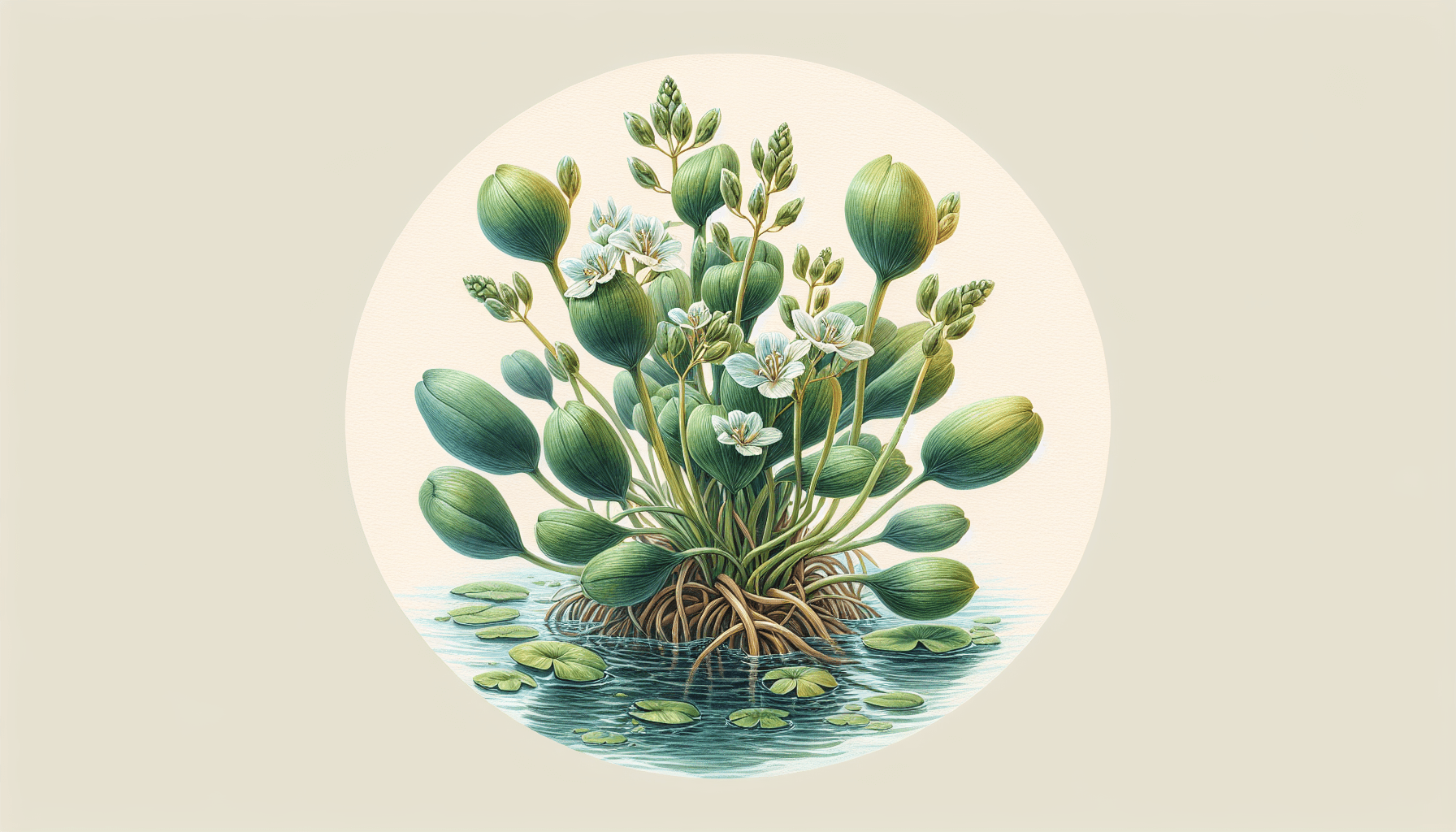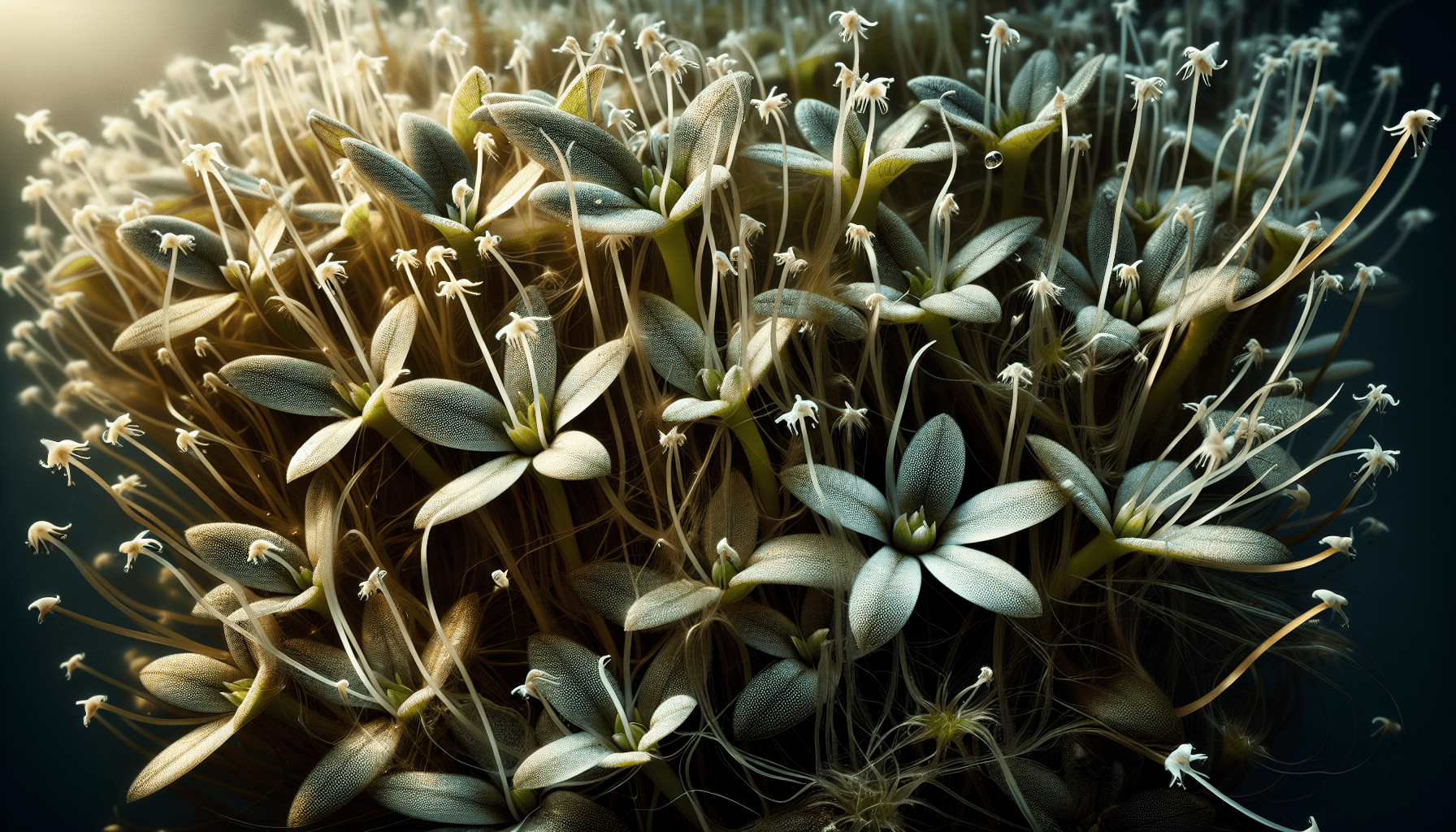As an enthusiast of aquatic horticulture, you may have come across a peculiar floating plant known as the Rootless Duck Plant. In this discourse, you will explore the distinctive characteristics of this fascinating organism and understand why it indeed lacks roots, unlike most other water-dwelling plants. Gleaning insights from botanical studies, you will uncover what really sets this species apart amidst the rich array of plants that populate our waterways. Prepare to be enlightened about the Rootless Duck Plant’s ecology, growth factors, and the unique role it plays in its aquatic surroundings.
Understanding the Rootless Duck Plant
Scientific name and taxonomic classification
The Rootless Duck Plant is scientifically known as Wolffia arrhiza, a member of the family Araceae. This plant goes by several names depending on the region and is part of the largest angiosperm family, also known as the flowering plants. Additionally, this plant belongs to the Lemnoideae subfamily and the Wolffia genus, one of the smallest genera of flowering plants containing 11 known species.
Worldwide habitat and distribution
The Rootless Duck Plant is a cosmopolitan species, signifying it has a global distribution spanning numerous regions. Its presence ranges from North America to Australia, from Asia to the vast extents of Europe. The adaptive nature of this plant allows it to proliferate in various climates and persisted water bodies.
Common names across different regions
The Wolffia arrhiza has numerous aliases notable in different parts of the globe. Some common regional names include “watermeal” in North America, “water lentil” or “duckweed” in Europe, and “Asian watermeal” in Australia.
Appearance and Structure
Leaf arrangement and color
The Rootless Duck Plant possesses a peculiar appearance with two green leaf-like structures called fronds, combined to form a flattened floating body. This floating structure may reach up to 1.5 millimeters in length and possesses a pale green color that adds to its inconspicuous veneer.
The unique ‘rootless’ aspect
The Rootless Duck Plant, as its name suggests, is a distinctive specimen in the botanical world due to its lack of roots. Unlike most aquatic plants, this plant floats freely in the water, deriving its nutrients directly from the water through its frond surface instead of from roots.
Comparing with other duck plants
In comparison to other members of the duckweed family, the rootless duck plant presents the smallest and most simplified structure. Lacking not only roots but also stem and leaves, the rootless duck plant is composed solely of a pair of joined floating fronds that perform all necessary biological functions.

Growth Habits
Growth cycle and speed
Under ideal conditions, the Rootless Duck Plant can grow at an astonishing rate. A floating pair of fronds may produce a new pair every 36 to 48 hours, leading to exponential population growth.
Seasonal changes and rate of proliferation
The growth habits of the Rootless Duck Plant are heavily influenced by the changing of seasons. During the warmer months, it is expected to exhibit its most rapid rate of proliferation. However, in cooler temperatures, growth may slow significantly or enter a state of dormancy.
Longevity of the individual plant
An individual plant, which consists only of a pair of fused fronds, can survive for several months up to a year. Its longevity, however, is mostly determined by the rate of reproduction and the survival of the subsequent generations.
Habitat Preferences
Water quality conditions
The Rootless Duck Plant is extremely adaptable and can survive in a range of water conditions, from stagnant waters to slow-moving bodies. However, it tends to thrive best in nutrient-rich waters, which help to support its rapid growth.
Temperature and light requirements
This plant enjoys a preference for warmer temperatures, generally those between 10°C to 30°C. Additionally, the Rootless Duck Plant requires a good amount of sunlight to perform photosynthesis, its primary means of nutrition.
Issues with different types of aquatic environments
While this plant is highly adaptable, its survival becomes questionable in polluted waters. High amounts of toxins or pollutants can be harmful to the plant. It is also impacted by rapid water flow or water bodies with frequent disturbances as its free-floating nature leaves it vulnerable to being swept away.

Role in Aquatic Ecosystems
Providing food for aquatic fauna
The Rootless Duck Plant plays a crucial role as a food source for various aquatic animals, particularly ducks, from which it draws its common name. Besides ducks, fish, insects, and snails also feed on this plant.
Creating shelters and breeding grounds
The thick carpets formed by these plants on the water surface can provide a refuge for small aquatic creatures, including insects and amphibians. It also serves as breeding grounds for certain species, offering protection to eggs and fish fry.
Contributing to oxygenation and water purification
The Rootless Duck Plant is valuable to water bodies’ health. As with other plants, it exchanges gases with its surroundings, thereby releasing oxygen into the water. Simultaneously, it absorbs a variety of pollutants and excess nutrients from the water, derived from agricultural runoff or sewage, thus playing an indirect role in water purification.
Human Uses
Ornamental use in ponds and aquariums
Due to their verdant, carpet-like appearance, Rootless Duck Plants are popular choices for decorating household ponds and aquariums. However, they must be adequately maintained due to their fast growth habits to avoid overcrowding.
Culinary uses and nutrient content
In certain regions, the Rootless Duck Plant is consumed as food due to its high protein content. It’s also found to be rich in essential amino acids and vitamins, making it a nutritious choice for those incorporating it into their diet.
Traditional uses in herbal medicine
The plant has been used in traditional medicinal practices in some cultures. Still, it remains under the magnifying glass to validate these medicinal properties scientifically.
Propagation Methods
In water through seed dispersal
The Rootless Duck Plant usually reproduces asexually via vegetative propagation, where each plant can divide into two new plants. However, under certain conditions, the plant can also produce a single seed hidden within the fronds. Once mature, the seed is released into the water, where it remains dormant until environmental conditions become favorable.
Clonal reproduction via leaf budding
The Rootless Duck Plant primarily employs clonal reproduction, where new fronds bud off from the parent plant. This budding is so efficient that exponential growth can occur under ideal conditions.
Artificial propagation in aquariums or ponds
For those looking to propagate the Rootless Duck Plant in their aquariums or ponds, the process is quite simple. Place a few plants in the water, ensuring favorable temperature and light conditions, and let the plant’s rapid reproductive habits take over.
Disease and Pest Susceptibility
Common diseases affecting the Rootless Duck Plant
Like most plants, Rootless Duck Plants are susceptible to several diseases caused by fungi or bacteria. Some common symptoms to watch for include color changes, reduced growth, or general plant wilting.
Potential pests and infestation prevention
Pest infestations may pose a significant threat to the health of Rootless Duck Plants. In particular, snails and certain types of insects may consume or harm the plant. Maintaining your aquarium or pond can go a long way in preventing such infestations.
Strategies for disease and pest management
The management of diseases and pests is integral to the survival of these delicate plants. A well-balanced aquatic ecosystem that includes biodiversity can help to manage potential pest issues. For disease control, ensuring good water conditions, especially in an enclosed environment like an aquarium, plays a critical role.
Potential Threats and Conservation Status
Impacts of pollution and habitat loss
Pollution and habitat loss pose significant threats to the Rootless Duck Plant. Water pollution, in particular, can severely disrupt the plant’s growth and cause population decline.
Invasive species status in certain regions
In some regions, the rapid proliferation of the Rootless Duck Plant has earned it the status of an invasive species. Its unchecked spread can choke water bodies and disrupt balance in the aquatic ecosystem, leading to other aquatic plants’ death.
Conservation efforts and protected status
There are ongoing efforts to address the decline of the Rootless Duck Plant in regions where it is threatened. However, due to its global distribution, it is generally not considered endangered and does not hold any protected status.
Research and Studies
Past studies on the species’ ecology
Past research on the Rootless Duck Plant majorly revolved around its ecological role and rapid growth habits. It is studied extensively as a tool for understanding basic plant biology due to its simplified structure and fast growth speed.
Current research on its medicinal properties
Emerging research is exploring the Rootless Duck Plant’s potential medicinal properties. Early studies indicate the presence of antioxidants in this plant that could provide health benefits, but this research is still in its initial stages.
Future research interests and potential applications
Future research areas include further elucidating the plant’s potential use in wastewater treatment due to its ability to remove pollutants from water bodies. Additionally, high nutritional content and fast growth of the plant earmark its potential use in biotechnology and as a sustainable food source.
